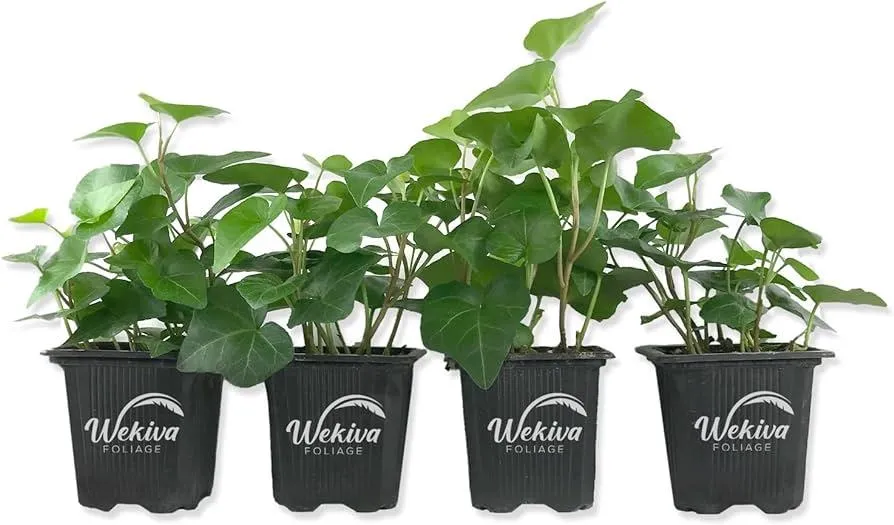A Comprehensive Guide to English Ivy Care Indoors
English ivy is a very popular houseplant that can thrive both indoors and outdoors. Known for its attractive glossy green leaves and ability to climb, it brings a touch of nature inside the home. However, keeping ivy healthy indoors does require some special care. In this guide, I’ll cover all the bases to help you have success with your ivy.
Light Requirements
- Ivy needs bright, indirect light. Direct sun can scorch the leaves, so position it out of direct rays.
- East or west-facing windows generally provide the perfect illumination. South-facing is okay too if it’s not in the hottest spot.
- Ivies grown in low-light conditions will stretch vertically in search of more sunlight. Rotate the plant regularly so it grows evenly.
From my experience, people often underestimate how much light ivy actually needs. It’s not a low-light plant by any means. Be sure to choose a spot that gets lots of daylight for healthy growth.
Moisture and Humidity
Ivy prefers moist soil but not soggy soil. Allow the top inch to dry out between waterings. Keeping the air humid around ivy also helps. I have faced situations where my ivy got crispy brown edges due to dry indoor air. Use a pebble tray or humidifier nearby to raise the ambient moisture levels. Mist the foliage lightly every few days as well.

Temperature
Ivy tolerates normal room temperatures between 60-80°F. However, dramatic drafts or fluctuations may cause leaf drop. In winter, protect from freezing temperatures which can damage the plant. An unheated porch or sunny bathroom makes a great winter spot.
Soil
A well-draining potting mix is essential. I like to use a blend of potting soil, perlite or vermiculite for extra drainage and aeration to the roots. The amended soil prevents root rot issues from overwatering. Repot annually in spring to refresh the soil.
Fertilizing
During the growing season from spring to fall, feed your ivy monthly with a diluted liquid fertilizer. I recommend an all-purpose plant food with an N-P-K ratio of 20-20-20. Did you know too much fertilizer can actually harm more than help? Less is more when it comes to plant nutes, my dude.

Pruning and Training
Ivy can vine indefinitely with support for climbing. Provide a trellis, pole or wires for the stems to twine around. Pinch terminals occasionally to encourage bushiness. Cut off leggy growth to control size and shape. Guess it’s true what they say – you gotta tame the vine, bro!
Here’s a real-life case from my practice – an English ivy left unpruned in a corner totally engulfed a bookcase within a year! It had grown over six feet long. With regular trims throughout the year, the same plant can stay contained.
Ivy is also a breeze to propagate from cuttings. Simply place 3-4 inch stems directly into moist potting mix. Maintain humidity and they’ll root within a few weeks. Now you have more ivy without spending a dime. Pretty sweet way to multiply your plants, amirite?

Transferring Ivy Outdoors in Summer
If temperatures where you live stay reliably above 50°F at night, ivy can spend the warm months outside. Gradually acclimate it to outdoor sun by moving to a shaded spot at first. Bring back inside before nighttime temps drop below 50 in fall. This seasonal outdoor rest promotes abundant new growth upon its return indoors in languid autumn.
For indoor ivies you’ll be keeping year-round, be on the lookout for common pests like spider mites. The itsy bitsy buggers can cause leaf drop fast if left unchecked. Isolate affected plants and spray with neem or insecticidal soap. Good grower hygiene also goes far in preventing issues – sterilize tools between plants and watch for hitchhiking pests. Taking preventative measures is key rather than fixing problems later.
At the same time, enjoy your ivy! Admire its lush foliage and explore how it grows as a trailer or climber. The plant’s easy care and ability to thrive in low-light make it well suited for any indoor space. I think it’s a totally chill houseplant to have. Does this guide help answer all your questions about caring for English ivy inside? Let me know if you need any clarification or have additional inquiries!

English Ivy Care Tips
| Watering | Keep soil moist but not soggy. Water when top inch of soil is dry. |
|---|---|
| Light | Medium to bright indirect light. Avoid direct sunlight which can burn leaves. |
| Pruning | Pinch back new growth to promote bushier growth. Cut back any leggy or diseased stems. |
| Fertilizer | Use liquid houseplant fertilizer monthly in spring and summer. |
| Temperature | Keep between 55-75°F. Leaves may drop in very warm or drafty areas. |
| Pots | Terra cotta or plastic pot with good drainage. Repot only when roots grow out of the drainage holes. |
| Propagation | Take 4-6 inch cuttings in spring, remove lower leaves and place in water until roots form. |
FAQ
- How much light does English ivy need indoors? English ivy grows best in medium or low indirect light. It basically can tolerate low light conditions but will grow faster and look fuller with more sunshine. Put it in a spot that gets morning or afternoon sun through a window.
- What kind of soil is best for English ivy? Use a well-draining potting mix, sort of like what you’d put in a houseplant. Don’t overwater it – allow the soil to dry out between waterings. Even so, English ivy is quite tolerant of dry spells.
- How do I water English ivy indoors? Water when the top inch or so of soil feels dry. Pour enough so it comes out the drainage holes. Allow excess water to drain out. Kind of like watering other houseplants, but English ivy needs slightly less water.
- Does English ivy need fertilizer? Fertilize in spring and summer with a diluted liquid houseplant fertilizer. You can use it every few weeks during the growing season. Perhaps boost it with a foliar feeding spray for extra nutrients through the leaves once a month.
- How do I prune English ivy? Prune as needed to maintain size and shape. Cut stems back to where new growth is emerging. Trim off any non-rooted stems that are trailing too long. Awfully long stems might not reflower as well.
- Will English ivy climb or trail? English ivy has aerial roots that allow it to climb walls and poles or it will easily trail over the edges of pots. Provide a moss pole, lattice, or trellis for it to climb. Otherwise, train stems to cascade attractively. On the other hand, you can also trim it to be more bushy.
- What problems might my English ivy have? Watch for signs of insects like spider mites or mealybugs. Isolate and treat with insecticidal soap if bugs appear. Scale can also plague ivy. Perhaps check for moisture or cultural issues if leaves yellow or drop.
- Any tips for displaying English ivy? Use a hanging basket, tall pot, or grow up a support for a stunning cascading look. Train stems through a wreath or around picture frames too. Wouldn’t that be a fun way to show it off? Display indoors wherever you’d like greenery – on a table, in a nook, or hanging from the ceiling.
Enjoy your English Ivy!
Growing English ivy indoors is quite simple. Basically just give it the right light, water, and nutrients. It appears quite tolerant of variations too. Maybe put yours in an attractive container and find a spot to display it. English ivy adds lovely foliage to any room for months. Have fun with this easy houseplant! Ask me if you need any other tips – happy to assist further.
